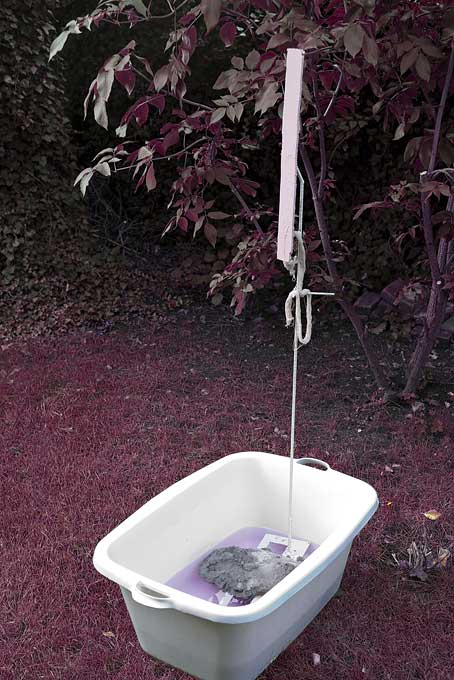
Actually, I sometimes even get afraid of puddles of water. Not because I think that Iíll drown but more because of there discrete nothingness, just as dirty/black/reflecting/casual/amorphic puddles. It reminds me of all the destruction that quietly flows into the world. Water, if itís not something Iím drinking, probably reminds me of how fragile our cultural constructs are. †
If you play with the whole antisocial and romantic setup and look at MÝstings House together with the reflection in the lake and maybe especially think of the fact that the house once before was packed up and moved then you remain with an odd ghost-like connection between fiction and construction. Poeís ĒFall of The House of UsherĒ is just around the corner.
Originally, I did not know that itís an artificial lake. My first thought was that it was some sort of village pond that had then been cultivated in the classical romantic garden tradition.†A tradition which is in full bloom in the Frederiksberg Park right behind. When I went to look at the lake for the first time in this connection, the lake had just been drained and to my great joy I discovered that the lake was not a lake but an artificial concrete basin.†The bottom of the basin is constructed by large concrete plates.†All at once, that yanks the discourse out of the nature and out of the romantic garden tradition and into a constructively pragmatic space that for me is a much better starting point from a visual art perspective. When the water is drained, the lake punctures itself as a representative setting. And then I suddenly have the home court advantage because my own work you can, or at least I can, perceive as a long line of punctured spaces and meanings.
With the concrete grid in the basin which almost becomes a sort of topographical drawing the lake possibly becomes a sort of cultural hole or double mirror which might give me the opportunity to together with Nicholas Roeg to make an antisocial inquiry about the relationship between water, blindness and vision.